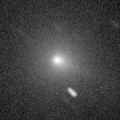
|
Now it is bright as 8.6 mag (Sept. 1, Juan Jose Gonzalez). It is expected to brighten up to 7.5 mag in October. In the Northern Hemisphere, it stays observable in excellent condition for a long time. In the Southern Hemisphere, it is getting lower gradually, and it will be unobservable for a long time after October.
Date(TT) R.A. (2000) Decl. Delta r Elong. m1 Best Time(A, h)
Sept. 9 3 53.78 14 33.1 0.961 1.580 106 8.4 4:12 (340, 68)
Sept.16 4 3.96 20 15.6 0.886 1.552 110 8.1 4:18 (354, 75)
|

|
It brightened up to 7.1 mag from May to June (June 21, Juan Jose Gonzalez). Now it is fading. But it is bright as 10.3 mag still now (Aug. 23, Chris Wyatt). In the Southern Hemisphere, it is observable in good condition after this. It will never be observable again in the Northern Hemisphere.
Date(TT) R.A. (2000) Decl. Delta r Elong. m1 Best Time(A, h)
Sept. 9 15 29.05 -47 6.9 1.976 2.012 77 10.2 19:41 ( 32, -4)
Sept.16 15 44.70 -49 0.0 2.091 2.065 74 10.4 19:30 ( 31, -6)
|
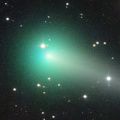
|
It brightened up to 6.2 mag in April (Apr. 7, Juan Jose Gonzalez). Now it is fading. It has already faded down to 10.8 mag (Sept. 1, Juan Jose Gonzalez), 13.1 mag (Aug. 30, Chris Wyatt). It stays observable for a long time after this.
Date(TT) R.A. (2000) Decl. Delta r Elong. m1 Best Time(A, h)
Sept. 9 3 58.88 23 22.7 1.670 2.147 103 10.9 4:12 (324, 76)
Sept.16 3 58.60 23 11.2 1.665 2.230 110 11.1 4:18 (358, 78)
|
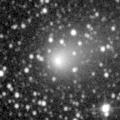
|
It brightened up to 10 mag from spring to summer. Now it is fading. It has already faded down to 12.7 mag (Aug. 23, Chris Wyatt). It is observable in excellent condition in the Southern Hemisphere. It locates low in the Northern Hemisphere.
Date(TT) R.A. (2000) Decl. Delta r Elong. m1 Best Time(A, h)
Sept. 9 18 20.37 -36 55.4 1.127 1.722 107 11.7 19:41 ( 7, 18)
Sept.16 18 37.48 -36 21.1 1.203 1.748 104 12.0 19:30 ( 7, 18)
|
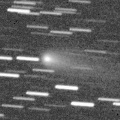
|
Now it is bright as 12.2 mag (Aug. 21, Juan Jose Gonzalez). It stays 12 mag until September.
Date(TT) R.A. (2000) Decl. Delta r Elong. m1 Best Time(A, h)
Sept. 9 6 42.98 11 47.4 1.481 1.413 66 12.0 4:12 (285, 39)
Sept.16 6 59.84 11 33.0 1.483 1.456 68 12.2 4:18 (288, 43)
|
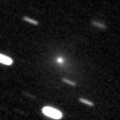
|
Now it is 13.9 mag (Aug. 13, Thomas Lehmann). It will stay bright as 10 mag for a long time from winter to next spring. In the Southern Hemisphere, it stays observable in good condition until next February. In the Northern Hemispehre, it stays observable for a long time after this until the comet fades out.
Date(TT) R.A. (2000) Decl. Delta r Elong. m1 Best Time(A, h)
Sept. 9 5 28.53 -2 56.3 3.544 3.608 85 12.3 4:12 (316, 42)
Sept.16 5 31.75 -2 38.1 3.401 3.561 90 12.2 4:18 (325, 46)
|

|
Outburst occured on Aug. 27. Now it is very bright as 11.3 mag (Sept. 11, Marco Goiato).
Date(TT) R.A. (2000) Decl. Delta r Elong. m1 Best Time(A, h)
Sept. 9 21 10.53 -14 35.9 4.932 5.821 149 13.2 21:56 ( 0, 40)
Sept.16 21 8.24 -14 41.5 4.994 5.819 141 13.2 21:26 ( 0, 40)
|
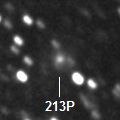
|
Now it is bright as 13.5 mag (Aug. 14, Chris Wyatt). It was expected to brighten up to 12 mag in summer. But actually, it is fainter than expected. It is observable in excellent condition in the Southern Hemisphere. It locates somewhat low in the Northern Hemisphere.
Date(TT) R.A. (2000) Decl. Delta r Elong. m1 Best Time(A, h)
Sept. 9 18 59.70 -22 58.5 1.311 1.987 117 13.5 19:46 ( 0, 32)
Sept.16 19 6.45 -22 1.7 1.372 1.985 112 13.5 19:30 ( 1, 33)
|
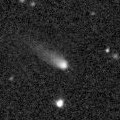
|
Now it is 12.9 mag (Aug. 22, Marco Goiato). It is observable at 13-14 mag in good condition until autumn.
Date(TT) R.A. (2000) Decl. Delta r Elong. m1 Best Time(A, h)
Sept. 9 20 27.16 -3 7.0 1.877 2.723 139 13.6 21:11 ( 0, 52)
Sept.16 20 7.51 -5 42.1 1.987 2.727 128 13.7 20:24 ( 0, 49)
|
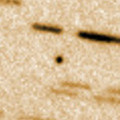
|
Now it is 17.5 mag (Aug. 6, Jean-Francois Soulier). It will pass the perihelion on Oct. 27. In the Southern Hemisphere, it stays observable while the comet will be brightening, until early October when the comet will brighten up to 9 mag. In the Northern Hemisphere, it is not observable at all in this apparition.
Date(TT) R.A. (2000) Decl. Delta r Elong. m1 Best Time(A, h)
Sept. 9 13 55.12 -63 48.4 1.081 1.285 75 14.2 19:41 ( 28,-25)
Sept.16 13 49.93 -59 30.8 1.068 1.156 67 13.6 19:30 ( 34,-25)
|
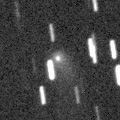
|
Now it is 14.8 mag (Aug. 21, Gabor Santa). In the Northern Hemisphere, it will brighten up to 14 mag from summer to winter, and it will be observable in excellent condition. It is not observable at all after this in the Southern Hemisphere.
Date(TT) R.A. (2000) Decl. Delta r Elong. m1 Best Time(A, h)
Sept. 9 23 5.59 68 59.1 2.779 3.200 105 13.8 23:48 (180, 56)
Sept.16 22 34.65 70 12.8 2.767 3.199 106 13.8 22:49 (180, 55)
|
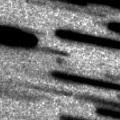
|
Now it is 15.8 mag (Sept. 2, Ken-ichi Kadota). It will brighten very rapidly, and brighten up to 10 mag from October to December. It is observable in good condition in the Northern Hemisphere. It locates very low for a long time in the Southern Hemisphere.
Date(TT) R.A. (2000) Decl. Delta r Elong. m1 Best Time(A, h)
Sept. 9 7 38.71 21 34.3 1.855 1.493 53 15.2 4:12 (266, 33)
Sept.16 8 4.88 21 11.2 1.781 1.444 54 14.4 4:18 (267, 35)
|
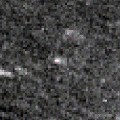
|
Now it is 17.1 mag (Sept. 3, Ken-ichi Kadota). Return of a new periodic comet which brightened up to 13 mag in 2004. It will be observable in excellent condition in autumn. It was expected to brighten up to 14 mag, if the comet is as bright as when it was discovered. But actually, it is not brightening as expected.
Date(TT) R.A. (2000) Decl. Delta r Elong. m1 Best Time(A, h)
Sept. 9 2 37.57 0 58.8 0.936 1.744 127 14.6 3:26 ( 0, 56)
Sept.16 2 42.34 1 46.4 0.886 1.734 132 14.4 3:03 ( 0, 57)
|
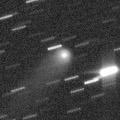
|
Now it is 14.1 mag (Aug. 14, Chris Wyatt). It will be observable at 14 mag for a long time from 2017 to 2018.
Date(TT) R.A. (2000) Decl. Delta r Elong. m1 Best Time(A, h)
Sept. 9 16 10.80 21 10.8 4.151 3.999 74 14.6 19:41 ( 80, 51)
Sept.16 16 8.56 20 42.7 4.227 3.978 68 14.6 19:30 ( 83, 47)
|

|
Now it is 14.1 mag (June 30, Chris Wyatt). It stays 14 mag from spring to summer. It locates somewhat low in the Northern Hemisphere. The perihelion distance increased from 2.4 a.u. to 2.9 a.u. in this apparition. So it will not be bright as before.
Date(TT) R.A. (2000) Decl. Delta r Elong. m1 Best Time(A, h)
Sept. 9 16 17.45 -25 18.9 2.905 2.916 80 14.7 19:41 ( 37, 19)
Sept.16 16 25.75 -25 43.8 2.993 2.914 75 14.8 19:30 ( 39, 18)
|
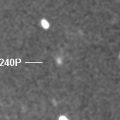
|
Although it was faint as 17.7 mag in July (July 8, ATLAS-MLO, Mauna Loa), now it is very bright as 13.9 mag (Aug. 28, Hidetaka Sato). It is observable in excellent condition in the Southern Hemisphere. It stays low for a while in the Northern Hemisphere.
Date(TT) R.A. (2000) Decl. Delta r Elong. m1 Best Time(A, h)
Sept. 9 0 36.52 -34 60.0 1.938 2.817 144 14.9 1:25 ( 0, 20)
Sept.16 0 31.19 -35 43.7 1.907 2.787 144 14.8 0:53 ( 0, 19)
|
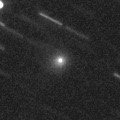
|
Now it is 14.7 mag (Aug. 22, Kunihiro Shima). It is expected to brighten up to 9 mag in summer in 2018. In the Northern Hemisphere, it stays observable until 2018 summer while the comet will be brightening. In the Southern Hemisphere, it is hardly observable in 2017, but it will be observable in good condition in 2018.
Date(TT) R.A. (2000) Decl. Delta r Elong. m1 Best Time(A, h)
Sept. 9 17 3.10 35 58.1 4.172 4.215 85 14.9 19:41 (100, 67)
Sept.16 17 3.33 33 45.7 4.177 4.157 81 14.9 19:30 ( 96, 63)
|
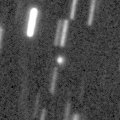
|
Now it is 15.0 mag (Aug. 18, Gabor Santa). It is expected to brighten up to 11-12 mag from 2018 to 2019. In the Northern Hemisphere, it stays observable in good condition while the comet will be brightening gradually. In the Southern Hemisphere, it is not observable until 2018 October.
Date(TT) R.A. (2000) Decl. Delta r Elong. m1 Best Time(A, h)
Sept. 9 14 53.68 52 27.5 4.432 4.118 65 15.0 19:41 (132, 44)
Sept.16 14 53.11 51 26.3 4.411 4.069 63 14.9 19:30 (131, 42)
|
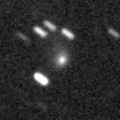
|
Now it is 15.3 mag (Aug. 22, Kunihiro Shima). It stays observable at 16 mag for a long time from 2017 to 2018.
Date(TT) R.A. (2000) Decl. Delta r Elong. m1 Best Time(A, h)
Sept. 9 2 15.00 26 28.8 3.691 4.347 124 15.2 3:04 ( 0, 82)
Sept.16 2 6.51 25 16.5 3.579 4.336 133 15.1 2:28 ( 0, 80)
|
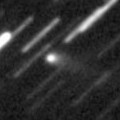
|
Now it is 17.0 mag (May 29, iTelescope Observatory, Siding Spring). It will brighten up to 14.5 mag in winter. In the Southern Hemisphere, it stays observable in excellent condition until spring in 2018. In the Northern Hemisphere, it stays unobservable until 2018.
Date(TT) R.A. (2000) Decl. Delta r Elong. m1 Best Time(A, h)
Sept. 9 3 27.95 -79 45.2 2.053 2.435 99 15.4 4:12 ( 0,-25)
Sept.16 3 32.48 -80 21.7 2.039 2.390 97 15.3 3:51 ( 0,-25)
|

|
Now it is 15.4 mag (Aug. 19, Gabor Santa). It stays observable at 16 mag unil the end of 2017.
Date(TT) R.A. (2000) Decl. Delta r Elong. m1 Best Time(A, h)
Sept. 9 3 39.04 2 55.5 5.468 5.922 112 15.4 4:12 (353, 58)
Sept.16 3 39.46 2 31.5 5.402 5.949 118 15.4 4:00 ( 0, 58)
|
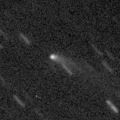
|
Now it is 16.4 mag (Aug. 26, Toshiyuki Takahashi). It was observed at 17 mag in 2016. In 2017, it will be observable at 15.5 mag in good condition from summer to autumn. It is fainter than this ephemeris recently.
Date(TT) R.A. (2000) Decl. Delta r Elong. m1 Best Time(A, h)
Sept. 9 1 41.63 16 53.3 2.052 2.866 136 15.6 2:30 ( 0, 72)
Sept.16 1 38.71 17 19.2 2.003 2.874 143 15.6 2:00 ( 0, 72)
|

|
Now it is 15.4 mag (Sept. 2, Ken-ichi Kadota). It will brighten rapidly, up to 15 mag in autumn, and will be observable in good condition in the Northern Hemisphere. It locates low in the Southern Hemisphere.
Date(TT) R.A. (2000) Decl. Delta r Elong. m1 Best Time(A, h)
Sept. 9 4 42.41 25 37.2 1.554 1.906 93 15.9 4:12 (294, 71)
Sept.16 4 54.46 26 53.0 1.494 1.909 97 15.8 4:18 (300, 75)
|
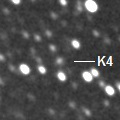
|
Now it is 15.5 mag (Aug. 9, Yuji Ohshima). It stays 16 mag for a long time until summer in 2018. In the Southern Hemisphere, it stays observable in excellent condition until autumn. It locates low in the Northern Hemisphere.
Date(TT) R.A. (2000) Decl. Delta r Elong. m1 Best Time(A, h)
Sept. 9 17 8.04 -29 14.5 2.689 2.910 92 15.8 19:41 ( 25, 21)
Sept.16 17 15.78 -28 39.2 2.751 2.882 87 15.8 19:30 ( 27, 21)
|
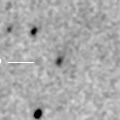
|
First return of a new periodic comet discovered in 2000. Now it is 16.3 mag (Aug. 26, Toshiyuki Takahashi). It will brighten rapidly, and it was expected to be observable at 15.5 mag in good condition from July to September. But actually, it is fainter than this ephemeris.
Date(TT) R.A. (2000) Decl. Delta r Elong. m1 Best Time(A, h)
Sept. 9 1 10.14 -8 11.8 1.702 2.623 149 15.8 1:59 ( 0, 47)
Sept.16 1 5.42 -7 49.0 1.684 2.639 156 15.9 1:27 ( 0, 47)
|
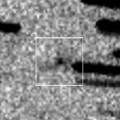
|
Now it is 18.5 mag (Aug. 13, Francois Kugel). It brightens rapidly, and brightens up to 11 mag from autumn to winter. It is observable in good condition in the Northern Hemisphere. It locates low in the Southern Hemisphere.
Date(TT) R.A. (2000) Decl. Delta r Elong. m1 Best Time(A, h)
Sept. 9 7 10.81 19 55.8 1.824 1.577 59 16.7 4:12 (271, 38)
Sept.16 7 34.12 19 43.3 1.754 1.542 61 16.4 4:18 (273, 40)
|

|
Now it is 16.0 mag (Aug. 22, Kunihiro Shima). It stays 16 mag from 2016 to 2017. In the Northern Hemisphere, it stays observable in good condition for a long time. In the Southern Hemisphere, it will never be observable again.
Date(TT) R.A. (2000) Decl. Delta r Elong. m1 Best Time(A, h)
Sept. 9 17 47.01 63 47.4 6.452 6.517 89 16.6 19:41 (165, 59)
Sept.16 17 48.42 63 15.1 6.469 6.531 89 16.6 19:30 (162, 59)
|
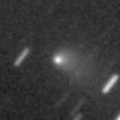
|
Now it is 15.8 mag (Sept. 2, Ken-ichi Kadota). It is observable in excellent condition in the Southern Hemisphere. It will be getting higher gradually in the morning sky also in the Northern Hemisphere. It will fade out rapidly after this.
Date(TT) R.A. (2000) Decl. Delta r Elong. m1 Best Time(A, h)
Sept. 9 21 10.42 -21 19.0 1.656 2.560 147 16.9 21:56 ( 0, 34)
Sept.16 21 7.46 -19 28.7 1.724 2.580 140 17.0 21:25 ( 0, 36)
|
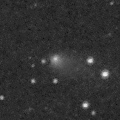
|
Hilda-type minor planet, but the cometary activity was detected on July 3. Now it is bright as 16.2 mag (Aug. 22, Kunihiro Shima).
Date(TT) R.A. (2000) Decl. Delta r Elong. m1 Best Time(A, h)
Sept. 9 20 53.52 -0 57.9 2.558 3.438 145 16.9 21:39 ( 0, 54)
Sept.16 20 51.73 -1 45.5 2.630 3.455 139 17.0 21:10 ( 0, 53)
|

|
Now it is 17.9 mag (June 2, MASTER-OAFA Observatory). It will brighten up to 14 mag from autumn to winter in 2018, and it will be observable in excellent condition in the Northern Hemisphere. In 2017, it is observable at 17 mag in excellent condition in the Southern Hemisphere.
Date(TT) R.A. (2000) Decl. Delta r Elong. m1 Best Time(A, h)
Sept. 9 23 53.87 -46 15.8 3.238 4.044 138 17.0 0:43 ( 0, 9)
Sept.16 23 45.63 -46 20.5 3.213 4.001 136 17.0 0:07 ( 0, 9)
|
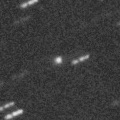
|
Now it is 17.1 mag (Sept. 2, Toshiyuki Takahashi). It is expected to brighten up to 13-14 mag from 2018 to 2019. In the Northern Hemisphere, it stays observable in good condition for a long time. In the Southern Hemisphere, it is not observable until summer in 2018.
Date(TT) R.A. (2000) Decl. Delta r Elong. m1 Best Time(A, h)
Sept. 9 18 45.88 64 6.6 5.338 5.523 95 17.1 19:41 (177, 61)
Sept.16 18 38.43 62 25.3 5.299 5.476 94 17.0 19:30 (171, 62)
|
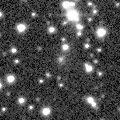
|
It will pass the perihelion in 2019. However, it has not been brightening since the discovery in 2010. It is observable in good conditioin in the Northern Hemisphere. It is not observable for a long time in the Southern Hemisphere.
Date(TT) R.A. (2000) Decl. Delta r Elong. m1 Best Time(A, h)
Sept. 9 6 36.82 67 6.9 9.194 9.015 76 17.1 4:12 (206, 48)
Sept.16 6 42.64 67 44.6 9.101 9.000 81 17.1 4:18 (203, 50)
|
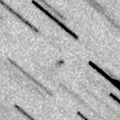
|
Now it is 19.3 mag (Aug. 23, Michael Jager). It is observable in good condition. But actually, it is much fainter than this ephemeris.
Date(TT) R.A. (2000) Decl. Delta r Elong. m1 Best Time(A, h)
Sept. 9 18 24.45 12 27.5 0.547 1.279 106 17.2 19:41 ( 19, 67)
Sept.16 18 47.15 14 0.2 0.593 1.307 106 17.3 19:30 ( 16, 68)
|

|
Now it is 18.0 mag (Aug. 22, Kunihiro Shima). In the Northern Hemisphere, it will be observable at 17 mag in excellent condition from autumn to winter. It locates low in the Southern Hemisphere.
Date(TT) R.A. (2000) Decl. Delta r Elong. m1 Best Time(A, h)
Sept. 9 5 16.98 30 30.3 2.936 3.031 85 17.3 4:12 (273, 66)
Sept.16 5 23.99 31 2.0 2.855 3.041 90 17.2 4:18 (276, 71)
|
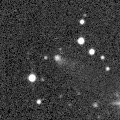
|
It was observed at 17 mag in 2016. It stays 17 mag also in 2017. It is observable in good condition in the Northern Hemisphere. It locates very low in the Southern Hemisphere.
Date(TT) R.A. (2000) Decl. Delta r Elong. m1 Best Time(A, h)
Sept. 9 6 37.66 32 49.1 3.121 2.909 68 17.4 4:12 (259, 50)
Sept.16 6 47.05 33 0.0 3.055 2.930 73 17.4 4:18 (261, 55)
|

|
It brightened up to 11 mag from spring to summer in 2016. Now it is 17.4 mag (July 14, Ken-ichi Kadota). It stays observable for a long time after this, but it will be fainter than 18 mag in October.
Date(TT) R.A. (2000) Decl. Delta r Elong. m1 Best Time(A, h)
Sept. 9 19 30.28 -20 59.5 2.931 3.601 124 17.5 20:16 ( 0, 34)
Sept.16 19 30.15 -21 4.7 3.054 3.634 117 17.6 19:48 ( 0, 34)
|

|
Peculiar asteroid moving along a comet-like orbit. It is observable at 18 mag in good condition from August to September. It locates somewhat low in the Southern Hemisphere.
Date(TT) R.A. (2000) Decl. Delta r Elong. m1 Best Time(A, h)
Sept. 9 22 27.16 17 54.3 2.830 3.764 154 17.7 23:12 ( 0, 73)
Sept.16 22 23.45 17 44.6 2.840 3.764 153 17.8 22:41 ( 0, 73)
|
|
![]()
 C/2017 K4 ( ATLAS )
C/2017 K4 ( ATLAS ) 352P/2017 L1 ( Skiff )
352P/2017 L1 ( Skiff ) 62P/Tsuchinshan 1
62P/Tsuchinshan 1 C/2014 OE4 ( PanSTARRS )
C/2014 OE4 ( PanSTARRS ) C/2017 D2 ( Barros )
C/2017 D2 ( Barros ) (457175) 2008 GO98
(457175) 2008 GO98 (944) Hidalgo
(944) Hidalgo C/2017 M4 ( ATLAS )
C/2017 M4 ( ATLAS ) C/2010 U3 ( Boattini )
C/2010 U3 ( Boattini ) 189P/NEAT
189P/NEAT 90P/Gehrels 1
90P/Gehrels 1 188P/LINEAR-Mueller
188P/LINEAR-Mueller 81P/Wild 2
81P/Wild 2 2016 ND21
2016 ND21![]()
































